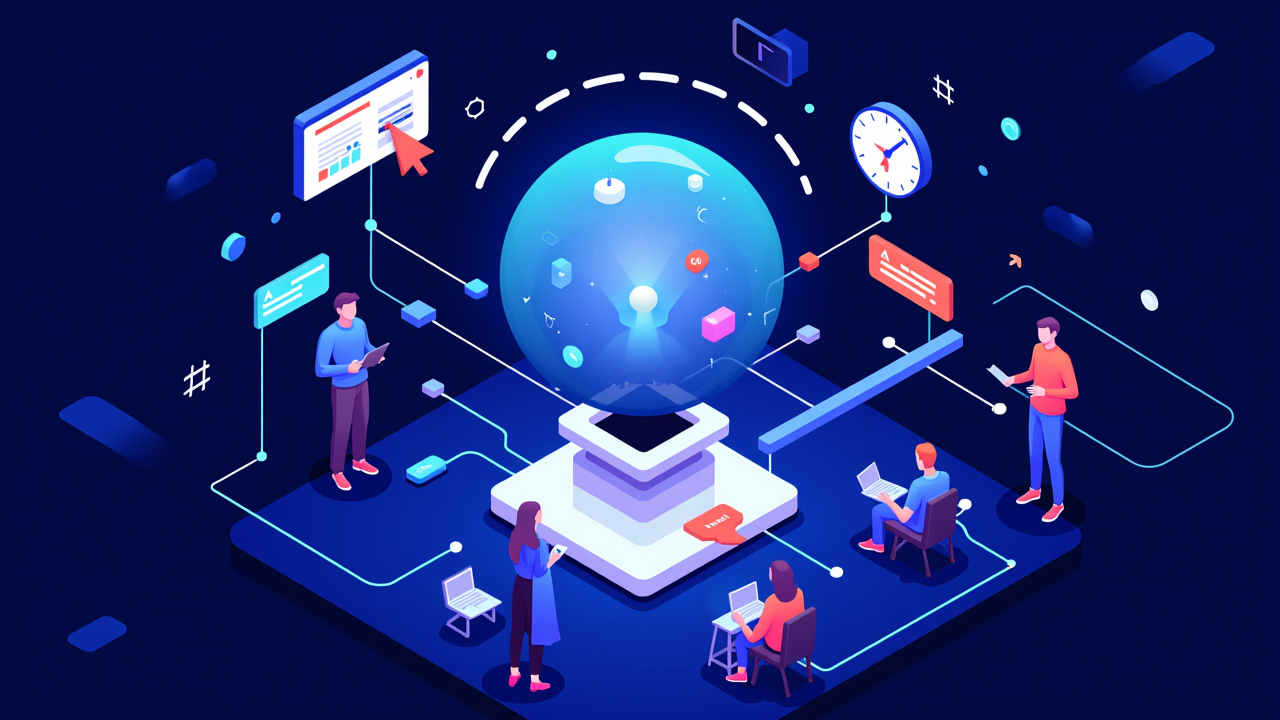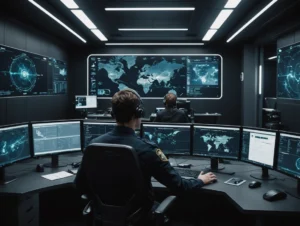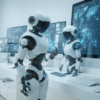The paradigm of work has fundamentally shifted towards remote and distributed models, bringing with it a unique set of challenges in coordination, communication, and productivity. While digital tools have bridged geographical distances, the overhead of managing asynchronous workflows and ensuring consistent output remains a significant hurdle. In this landscape, a new category of technology is emerging to address these complexities head-on. CrewAI is a cutting-edge framework designed to orchestrate autonomous AI agents, enabling them to collaborate on complex tasks. By simulating the structure of a human team, CrewAI offers a powerful solution for automating processes, accelerating project timelines, and empowering remote teams to achieve unprecedented levels of efficiency. This article explores the architecture of CrewAI, its mechanics, and its practical applications for the modern distributed workforce.
Introducing CrewAI: Autonomous Agents for Teams
CrewAI is an open-source framework designed for building and orchestrating multi-agent AI systems. At its core, it enables developers to create specialized autonomous agents, assign them distinct roles and goals, and have them collaborate to accomplish complex objectives. Unlike monolithic AI models that tackle a problem from a single perspective, CrewAI leverages the power of delegation and specialization. It breaks down a large, multifaceted problem into a series of smaller, manageable tasks, each handled by an AI agent with the most relevant skills and context. This mirrors the dynamics of a high-performing human team where individuals with different expertise work together towards a common goal.
The fundamental components of CrewAI are Agents, Tasks, and the Crew. An Agent is the foundational building block—an AI entity defined by a specific role (e.g., “Senior Market Researcher”), a goal (e.g., “Uncover market trends for AI-powered productivity tools”), and a backstory that provides context and personality. Tasks are the specific assignments given to these agents, detailing the work to be done. Finally, the Crew is the collaborative unit that brings the agents and their tasks together, defining the process by which they will interact to produce a final output. This structured approach ensures that the AI’s work is focused, coherent, and aligned with the overarching project objective.
The philosophy behind CrewAI is that collaborative intelligence yields superior results. When a single AI model is asked to perform a complex, multi-step task like “write a comprehensive market analysis report,” it may struggle with context-switching and maintaining a consistent level of quality across different sections. CrewAI circumvents this by assigning a “researcher” agent to gather data, an “analyst” agent to interpret it, and a “writer” agent to compile the final report. Each agent focuses solely on its area of expertise, leading to a deeper and more refined outcome. This division of labor is what makes CrewAI particularly effective for sophisticated, real-world business processes.
To illustrate, consider a simple agent definition. An agent is more than just a prompt; it’s a configured entity with a persistent persona. This allows it to approach problems from a consistent viewpoint throughout the workflow. The configuration provides the underlying Large Language Model (LLM) with the necessary guardrails to perform its designated function effectively, preventing it from straying into areas outside its purview. This focus is critical for ensuring the reliability and predictability of the crew’s output, making the system a dependable asset for business automation.
Here is a basic code example of how an agent is defined in Python using the CrewAI library. This snippet establishes a “Market Researcher” agent, providing it with a clear identity and purpose. The llm parameter would be configured with a specific language model, such as OpenAI’s GPT-4 or a local model. This modularity allows teams to choose the best AI engine for their needs and budget.
from crewai import Agent
from langchain_openai import ChatOpenAI
# Initialize the LLM you want to use
# Ensure you have your OPENAI_API_KEY set in your environment
openai_llm = ChatOpenAI(model_name="gpt-4-turbo", temperature=0.7)
# Define a Market Researcher Agent
researcher = Agent(
role='Senior Market Researcher',
goal='Discover and analyze cutting-edge developments in the AI industry',
backstory="""You are a seasoned market researcher with a knack for identifying emerging trends.
You have a deep understanding of technology markets and can sift through noise to find actionable insights.
Your analysis is always data-driven and objective.""",
verbose=True,
allow_delegation=False,
llm=openai_llm
)Ultimately, CrewAI serves as an orchestration layer on top of powerful LLMs. It provides the structure and process management that LLMs lack on their own. By abstracting the complexity of agent interaction, it allows developers and teams to focus on defining the workflow and the desired outcome rather than getting bogged down in the intricacies of prompt engineering for every single step. This makes it an accessible yet powerful tool for creating a “digital workforce” that can augment the capabilities of a human team, especially in a remote setting where clear, automated processes are paramount.
The Mechanics of AI Agent Collaboration
The collaborative power of CrewAI is unlocked through the interplay of Tasks, Tools, and Processes. A Task is a discrete unit of work assigned to an agent. It includes a detailed description of what needs to be accomplished and, crucially, a reference to the agent responsible for its execution. Tasks are the fundamental steps in the workflow, and their outputs are passed along to subsequent tasks, creating a chain of value. This ensures that the work of one agent, such as data collection, directly informs the work of the next, such as data analysis.
For collaboration to be meaningful, agents need the ability to interact with the outside world. This is where Tools come into play. A tool is a function or capability that an agent can use to perform actions beyond simple text generation. This could be a web search tool, a file reader, a database query tool, or a custom API connector. By equipping agents with tools, you transform them from pure thinkers into doers. For instance, a researcher agent can be given a tool to search the web for recent news articles, while a data analyst agent might have a tool to execute SQL queries on a company database.
Here is an example of defining a Task and equipping an agent with a Tool. We will use a pre-built tool from the crewai_tools library for web searching. This tool allows the researcher agent to access real-time information from the internet, making its analysis current and relevant.
from crewai import Task
from crewai_tools import SerperDevTool
# Initialize a search tool
search_tool = SerperDevTool()
# Re-define the researcher agent with the tool
researcher_with_tool = Agent(
role='Senior Market Researcher',
goal='Discover and analyze cutting-edge developments in the AI industry',
backstory="...", # Same as before
tools=[search_tool], # Assign the tool to the agent
verbose=True,
llm=openai_llm
)
# Define a task for the researcher
research_task = Task(
description="""Investigate the latest advancements in multi-agent AI frameworks.
Identify the key players, their primary innovations, and the potential market impact.
Your final output should be a summary report of your findings.""",
expected_output='A 3-paragraph summary report on recent multi-agent AI framework advancements.',
agent=researcher_with_tool
)The sequence of collaboration is governed by a Process. CrewAI offers two primary process models: sequential and hierarchical. The default, Process.SEQUENTIAL, is a linear workflow where tasks are executed one after another. The output of the first task becomes the input context for the second, and so on. This is ideal for straightforward processes like research, analysis, and reporting, where each step builds directly on the previous one. The flow is predictable and easy to manage, making it a great starting point for most automation use cases.
A sequential workflow for a market report might look like this:
- Task 1 (Researcher Agent): Use the
search_toolto find articles and papers on a specific topic. Produce a list of sources and key points. - Task 2 (Analyst Agent): Take the sources and key points, synthesize the information, identify trends, and generate a structured analysis.
- Task 3 (Writer Agent): Use the structured analysis to write a polished, human-readable report, formatted according to a predefined template.
For more complex scenarios where tasks can be done in parallel or require oversight, CrewAI supports Process.HIERARCHICAL. In this model, a manager agent is designated to coordinate the work of other agents. The manager can delegate tasks, review the outputs from subordinate agents, request revisions, and synthesize the final result. This structure is suitable for projects that require dynamic decision-making and are not strictly linear. It more closely mimics a real-world project team with a manager overseeing the work and ensuring quality and coherence across different workstreams. This advanced collaboration mechanic allows CrewAI to tackle highly sophisticated and non-deterministic problems.
Boosting Productivity in Distributed Workforces
In a distributed workforce, communication and coordination are often the biggest bottlenecks. Time zone differences can lead to significant delays, as a question asked at the end of one person’s day may not be answered until the start of the next. CrewAI directly addresses this by enabling the creation of autonomous workflows that can run 24/7 without human intervention. A complex research and reporting task that might take a human team several days of back-and-forth communication can be executed by an AI crew overnight. The human team members can then wake up to a completed first draft, ready for their strategic review and final touches.
Repetitive, manual tasks are a major drain on productivity and morale. These include activities like compiling weekly performance reports, summarizing meeting notes, triaging support tickets, or performing initial competitor research. These tasks are often well-defined and rules-based, making them perfect candidates for automation with CrewAI. By delegating this work to an AI crew, remote employees are freed from mundane activities and can focus their time and energy on higher-value, creative, and strategic initiatives that require human ingenuity and critical thinking. This shift not only boosts output but also increases job satisfaction.
Consistency is another significant challenge for remote teams. When processes are executed manually by different individuals, variations in quality and format are inevitable. An AI crew, however, operates with perfect consistency. Once a workflow is defined in code—with specific agents, tasks, and expected outputs—it will be executed in the exact same way every single time. This ensures that reports, analyses, and other deliverables adhere to a consistent standard, reducing the need for extensive editing and rework. This reliability is crucial for maintaining brand standards and ensuring data accuracy in business operations.
CrewAI also helps to break down knowledge silos, a common problem in distributed organizations. Often, critical processes are known only to a few key individuals. If they are unavailable, the work grinds to a halt. By codifying a workflow in a CrewAI script, that process becomes explicit, transparent, and executable by anyone. The script itself serves as living documentation of how a task is meant to be done. This democratization of process knowledge makes the team more resilient and agile, as dependencies on specific individuals are significantly reduced.
Consider a practical example: onboarding a new client. This process typically involves multiple steps, such as gathering client requirements, setting up a project in a management tool like Jira, creating initial documentation, and sending a welcome email. A remote team might struggle to coordinate these handoffs smoothly. An AI crew could automate the entire sequence. One agent could parse the client’s initial email for requirements, another could use an API tool to create the Jira tickets, a third could generate a draft project charter, and a final agent could compose the welcome email for a human manager to review and send. This seamless, automated handoff drastically reduces onboarding time and eliminates the risk of steps being missed.
Ultimately, the goal of integrating CrewAI is not to replace human team members but to augment their capabilities. It acts as a force multiplier, handling the preparatory and administrative work so that humans can operate at a higher strategic level. For remote teams, this means less time spent on coordination and more time spent on collaboration and innovation. The AI crew becomes a tireless digital assistant, ensuring that the foundational work is always done on time and to a high standard, allowing the human team to thrive in a more flexible and efficient work environment.
Practical Use Cases for Remote Team Automation
One of the most powerful applications of CrewAI for remote teams is in comprehensive market and competitor analysis. Manually gathering, synthesizing, and reporting on market trends is a time-consuming process prone to human bias. An AI crew can be designed to handle this from end to end. An “Information Gatherer” agent, equipped with web search and news API tools, can scan the internet for the latest articles, press releases, and financial reports related to a specific industry or competitor. Its output—a collection of raw data and sources—is then passed to a “Data Analyst” agent.
This “Data Analyst” agent’s task is to process the raw information, identify key themes, perform sentiment analysis, and extract quantitative data points like market share or revenue figures. It can then structure these findings into a coherent analysis, perhaps even generating a SWOT (Strengths, Weaknesses, Opportunities, Threats) analysis. Finally, a “Report Writer” agent takes this structured data and crafts a polished, professional report complete with an executive summary, key findings, and data visualizations (described in text). The entire process can be scheduled to run weekly, providing the team with a fresh, comprehensive market brief every Monday morning without any manual effort.
Another prime use case is content creation and SEO optimization. A remote content team can leverage an AI crew to dramatically accelerate its production pipeline. The workflow could start with an “SEO Strategist” agent. Given a primary topic, this agent would use search tools to perform keyword research, analyze top-ranking competitor articles, and generate a detailed content brief that includes a target keyword list, a suggested article structure, and key questions to answer.
This brief then goes to a “Content Creator” agent, whose goal is to write a high-quality first draft of the article based on the provided structure and keywords. Following the draft creation, an “Editor & SEO Optimizer” agent reviews the text. This agent is programmed to check for grammatical errors, improve readability, ensure proper keyword density, and suggest adding internal and external links. The final output is a near-publish-ready article, allowing the human writer or editor to focus on final polishing, adding unique insights, and ensuring the content aligns perfectly with the brand voice.
Here’s a workflow example for this content creation crew:
# Assuming agents (seo_specialist, content_writer, editor) and tools are defined
# Task 1: Create a content brief for an article on "AI in Remote Work"
task_brief = Task(
description="""Analyze the keyword 'AI in Remote Work'. Generate a comprehensive content brief
including a list of related keywords, a proposed H1/H2 structure, and a summary of top-ranking articles.""",
expected_output="A detailed content brief in Markdown format.",
agent=seo_specialist
)
# Task 2: Write the first draft of the blog post
task_draft = Task(
description="""Using the provided content brief, write a 1500-word blog post.
The tone should be professional and informative. Focus on practical applications and benefits.""",
expected_output="The full text of the blog post draft.",
agent=content_writer
)
# Task 3: Edit and optimize the draft
task_edit = Task(
description="""Review the blog post draft for grammatical errors, clarity, and flow.
Ensure the target keywords are naturally integrated. Add a concluding paragraph and a call to action.""",
expected_output="The final, polished version of the blog post.",
agent=editor
)
# Assemble the crew and kick off the sequential process
from crewai import Crew, Process
content_crew = Crew(
agents=[seo_specialist, content_writer, editor],
tasks=[task_brief, task_draft, task_edit],
process=Process.SEQUENTIAL,
verbose=2
)
result = content_crew.kickoff()For software development teams, CrewAI can automate parts of the coding and review process. A “Lead Developer” agent could be tasked with taking a feature request (e.g., “Create a REST API endpoint for user authentication”) and breaking it down into a technical specification, including defining the data models and function signatures. A “Software Engineer” agent would then take this specification and write the corresponding Python or JavaScript code. Finally, a “QA Engineer” agent could analyze the generated code, identify potential bugs or security vulnerabilities, and even write basic unit tests for it. This automated workflow provides developers with a solid, test-covered starting point, saving hours of boilerplate coding.
Integrating CrewAI into Your Digital Workflow
Getting started with CrewAI requires a basic development environment and an understanding of its core components. The primary prerequisite is Python (version 3.8 or higher). You can install the CrewAI library and its common dependencies with a simple pip command: pip install 'crewai[tools]'. The second key requirement is access to a Large Language Model (LLM) via an API. While CrewAI is model-agnostic, a common choice is one of OpenAI’s models (like GPT-4), which requires an API key set as an environment variable (OPENAI_API_KEY). You can also configure it to use open-source models hosted locally or on platforms like Groq or Hugging Face.
The integration process begins by identifying a suitable pilot project. Choose a workflow within your team that is repetitive, well-defined, and currently consumes significant manual effort. A good example is generating a weekly project status summary from Jira data. You can start by defining the agents and tasks needed for this process. One agent could be responsible for fetching data from the Jira API, another for summarizing the updates, and a third for formatting the summary into an email or Slack message. This focused approach allows you to demonstrate value quickly and learn the framework without disrupting critical operations.
The real power of CrewAI is unlocked when you connect it to your existing digital ecosystem using custom Tools. A tool in CrewAI is simply a Python function decorated to make it available to an agent. You can write functions that interact with any service that has an API. For instance, you could create a post_to_slack tool, a create_jira_ticket tool, or a read_from_google_sheet tool. This allows your AI crew to not only process information but also take action within the platforms your team already uses, creating a seamless bridge between the AI’s work and the human workflow.
Here is a complete, runnable example of a simple two-agent crew designed to research a topic and write a brief email about it. This script demonstrates how to define agents, tools, tasks, and the crew, and then execute the workflow.
import os
from crewai import Agent, Task, Crew, Process
from crewai_tools import SerperDevTool
from langchain_openai import ChatOpenAI
# Set your API keys as environment variables
# os.environ["OPENAI_API_KEY"] = "YOUR_KEY"
# os.environ["SERPER_API_KEY"] = "YOUR_KEY"
# 1. Initialize LLM and Tools
openai_llm = ChatOpenAI(model_name="gpt-4-turbo", temperature=0.7)
search_tool = SerperDevTool()
# 2. Define Agents
researcher = Agent(
role='Tech Research Analyst',
goal='Provide concise, factual summaries of new technologies.',
backstory='An expert analyst with a talent for distilling complex topics into clear, understandable insights.',
tools=[search_tool],
llm=openai_llm,
verbose=True
)
writer = Agent(
role='Professional Email Writer',
goal='Craft clear, concise, and engaging emails.',
backstory='A skilled communications expert who can turn technical information into compelling email copy.',
llm=openai_llm,
verbose=True
)
# 3. Define Tasks
task_research = Task(
description='Research the topic "What is CrewAI?" and provide a 3-bullet point summary.',
expected_output='A three-bullet-point list summarizing CrewAI.',
agent=researcher
)
task_write = Task(
description='Using the provided research summary, write a short email to the team explaining what CrewAI is and why it might be useful.',
expected_output='A well-formatted email in Markdown.',
agent=writer
)
# 4. Assemble the Crew
tech_update_crew = Crew(
agents=[researcher, writer],
tasks=[task_research, task_write],
process=Process.SEQUENTIAL
)
# 5. Kick off the work
print("Crew: Kicking off task...")
result = tech_update_crew.kickoff()
print("nn########################")
print("## Here is the final result:")
print("########################n")
print(result)It is crucial to implement a “human-in-the-loop” strategy, especially when first integrating CrewAI. The output of an AI crew should be considered a high-quality first draft, not a final, deployable product. The final step in any automated workflow should be a review by a human team member. This ensures quality control, allows for the addition of nuanced insights that an AI might miss, and maintains human oversight of important processes. The goal is augmentation, where the AI handles 80-90% of the work, and the human provides the final 10-20% of critical polish and strategic approval.
As your team becomes more comfortable with CrewAI, you can begin to automate more complex and interconnected workflows. You can build crews that trigger other crews, creating sophisticated, multi-stage automation pipelines. The long-term vision is to build a digital workforce that operates alongside your human team, seamlessly handling operational tasks and freeing up your organization’s most valuable resource—its people—to focus on creativity, strategy, and growth. This symbiotic relationship between human and AI collaborators represents the future of efficient and scalable remote work.
CrewAI represents a significant leap forward in the practical application of artificial intelligence for business operations. By moving beyond single-prompt interactions to a structured, collaborative framework of autonomous agents, it provides a robust solution to the persistent challenges of remote work. The ability to automate complex, multi-step processes with consistency and speed empowers distributed teams to overcome the limitations of time zones and communication latency. From market research and content creation to software development and client onboarding, the potential applications are vast. As organizations continue to embrace remote work, tools like CrewAI will become indispensable, not as replacements for human talent, but as powerful partners that amplify productivity, foster innovation, and redefine the boundaries of what a distributed team can achieve.




